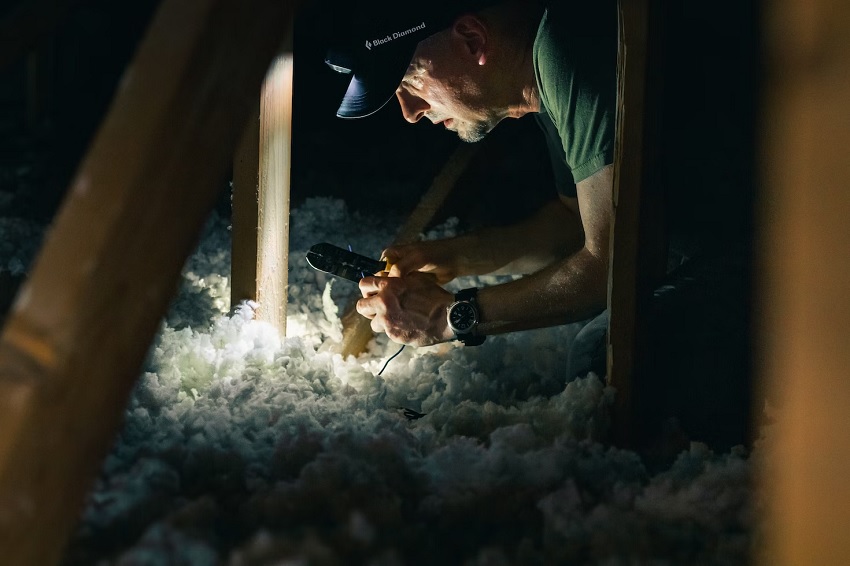Up to 50% of the air flows up from the crawl space. The crawl space under a house often goes unnoticed. Homeowners hardly inspect it until something goes wrong. In general, crawl spaces are dark, dirty, and filled with pests and creepy crawlers. Even crawl spaces with ventilation can accumulate moisture, putting the house at risk for water damage from mold growth, wood decay, pest infestation, and poor energy efficiency. Crawl Space Encapsulation helps keep it dry and clean, improving the quality of living in the home.
Encapsulation of Crawl Space
The process of encapsulating a crawl space involves attaching a heavy-duty polyethylene barrier to the crawl space’s floors, foundation walls, and sometimes even its ceiling. An encapsulating barrier can be compared to the pool lining that prevents leaks. The barrier is most effective when it completely covers the crawl space of the house. Following the installation of the barrier, the space is sealed by using sealing tape, and a dehumidifier is used to control the level of moisture.
How does Crawl Space Encapsulation Work?
Professionals start by evaluating the property’s specifications and verifying whether the crawl space meets the criteria for encapsulation. Encapsulation of the crawl space includes:
● Making the ground beneath the house flat and smooth by raking
● Debris removal
● Putting in a new access door to provide more ventilation
● Insulating each block wall with foam
● Putting in a liner on the walls and the floor
● Installing humidifiers and a drain line as necessary
● Replacing all damaged, unnecessary, or outdated insulation
● Providing necessary mold and mildew treatment
● Using spray foam insulation, wrap steel wool around all pipes entering the house.
● New insulation installation
Purpose of Encapsulating the Crawl Space
Homeowners opt for crawl space encapsulation for the following purposes:
● Eliminating the risk of growing mold in the home
● Removing musty, mildew odor.
● Controlling heating and cooling costs in the home
● Dry insulation
● Treating sweating-looking windows
● Home pest infestation removal
Benefits of Crawl Space Encapsulation
Preventing moisture buildup in the crawl space is mandatory for the long-term integrity of the foundation of the house. Crawl Space Encapsulation has the following benefits-
Improves Air Quality and Eliminates Insect Infestation
Enclosing the crawl space promotes clean air circulation throughout the residence. Dampness attracts pest infestation, especially termites. Encapsulating crawl spaces prevents the risk of nurturing conditions that encourage the growth of insect colonies.
Increases Healthy Living Conditions Through Mold and Mildew Prevention
Controlling moisture will stop unwanted dampness issues. If the crawling space is infested with mold due to dampness, the HVAC system will release tiny but dangerous particles of mold along with musty, damp odors into the house, posing serious health risks to the residents. No one wants to become sick from spending time at home. Enclosing a crawl area makes the home a healthier place for families to live and breathe.
Increases Energy Efficiency
Monthly utility expenses will go down when the heating and cooling system doesn’t have to work as hard to deal with the damp air caused by a moist crawl space. Once more, with crawl space encapsulation, the temperature of the hardwood and tile flooring will be pleasant to walk on, particularly in the winter. In the warmer summer months, encapsulation prevents the house from feeling soggy and humid.
Conclusion
The value of the house will increase when people choose to enclose their crawl space. However, the efficiency of the Crawl Space Encapsulation depends on how it is installed. For long-lasting effects, it is recommended to work with experts in crawl space encapsulation since consistency and accuracy are absolutely essential when building the barrier











